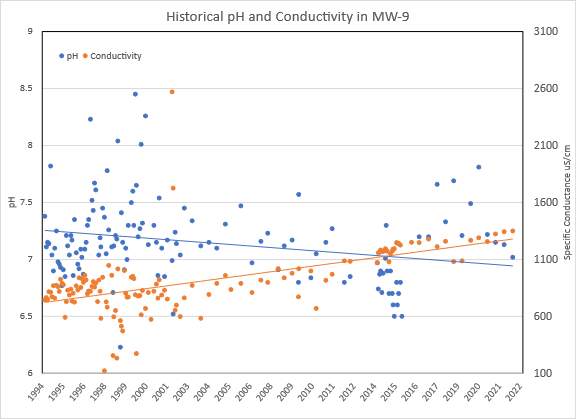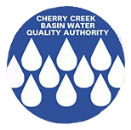Alluvial Water Quality
Highlights:
Alluvial (groundwater) contributes approximately 14% of the total annual yearly inflow to the Reservoir. Phosphorus concentrations in groundwater are similar to concentrations in Cherry Creek and higher than the average of all surface water inflows concentrations.
Concentrations of soluble reactive phosphorus (SRP) are used for long term evaluation of phosphorus because it is the main chemical form found groundwater and a longer period of record is available. SRP concentrations in the alluvial inflow (MW-9) to Cherry Creek Reservoir are more consistent than surface water inflows (CC-10). The alluvial groundwater concentrations are typically similar to the 200 ug/L background phosphorus level in the streams. In WY 2022, the average SRP concentration of the alluvial inflow was 184 ug/L, which is similar to surface water concentrations. Historical data for SRP in the groundwater upstream of the Reservoir suggest that SRP may be increasing, with an annual mean of 183 ug/L from 1994-2003 and 199 ug/L from 2004 to 2022.
The historical pH at MW-9 appears to be relatively stable but conductivity values may be increasing over time.

Why does Alluvial Water Quality Matter?
Groundwater travels more slowly than surface water to the Reservoir. CCBWQA samples groundwater to characterize the contribution and timing of past and current pollutant loads that originate underground.

Nutrient Concentrations: Alluvial and Surface Water Comparisons
info_outlineEach point on this graph represents a sampling event. The different point colors represent different locations. To learn more about a specific data point, hover over it with your mouse.
Hey! This page is interactive.
- Change the start and end dates to look at different time periods
- Investigate different parameters using the parameter dropdown list
- Select the surface water and groundwater location you would like to compare
- To learn more about a specific data point, hover over it with your mouse
